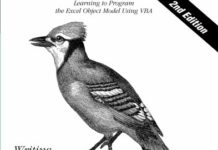
Ebook Info
- Published: 2005
- Number of pages: 208 pages
- Format: PDF
- File Size: 3.73 MB
- Authors: Steven Roman
Description
Geared toward upper-level undergraduates and graduate students, this elementary introduction to classical umbral calculus requires only an acquaintance with the basic notions of algebra and a bit of applied mathematics (such as differential equations) to help put the theory in mathematical perspective. Subjects include Sheffer sequences and operators and their adjoints, with numerous examples of associated and other sequences. Related topics encompass the connection constants problem and duplication formulas, the Lagrange inversion formula, operational formulas, inverse relations, and binomial convolution. The final chapter offers a glimpse of the newer and less well-established forms of umbral calculus. 1984 edition.
User’s Reviews
Reviews from Amazon users which were colected at the time this book was published on the website:
⭐Have you come across the umbral calculus? The umbra (Latin: “shadow”) is the darkest part of a shadow. But in mathematics? Perhaps a generating function is the shadow of its distribution? Or the term umbral calculus refers to surprising similarities between otherwise unrelated polynomial equations, and certain shadowy techniques used to prove them.It is used in the study of orthogonal polynomials, in differential equations, in computations generally, and in the study of probability distributions. In fact it is an old (classical!) theory, but it undergoes periodic revivals.An especially notable revival was pioneered by Gian-Carlo Rota in the 1970ties. He put the subject on a firm (rigorous!) foundation; with axioms, operators, diagrams, and duality arrows.Previously it had been more like a bag of tricks involving formal power series and ad hoc computations with generating functions.Motivated by Rota, Steven Roman came out with a different book: offering a wider view, a striking elegance, and including numerous new and intriguing applications. Roman’s book was now reprinted in 2005 by Dover in this attractive little volume. Review by Palle Jorgensen, September 2007.
⭐This book is a reference text on polynomials that are useful in quantum mechanics. Orthogonal polynomials are the backbone of Hilbert spaces and solutions to problems like the wave mechanics of hydrogen.The only problem I have with the book is that he has only 5 categories and leaves out the matrix generated polynomials that are related toto Heisenberg’s matrix mechanics which is equivalent to Schrödinger’s wave mechanics. I wish that I could already say I understood things like Vandermonde’s convolution formula,but that is why I bought the book and why it delivers the goods.
⭐A little difficult but after some work and translating to Pascal Matrices it all makes sense. There are some points that are glossed over though; that’s where the “little difficult” comes in. In particular some operators (even one’s having t in the definition) don’t commute; and the general movement of linear operators from the x to the t domains explanations leaves a bit of work for the reader to understand.Elementary groundwork on finite polynomials and formal seriesSome typical uses and sequencesOperatorsExamplesTopicsExtensions.Definite buy recommendation.
⭐Ugly book
⭐Another viewpoint on this subject than the one in the paper of Rota, Kahaner, and Odlyzko is in a paper titled _The_Umbral_Calculus_, by Steven Roman and Gian-Carlo Rota, published in Advances in Mathematics, volume 31, pages 95-188, in 1978. That paper makes the connection between the theory of Sheffer sequences and the “symbolic method” of Blissard much clearer than does the one by R., K., & O., and can also serve as motivation if you need that before tackling this book.I’m writing this second review in order to mention that other source, but, since I earlier said I’d give this four-and-a-half stars, I’m taking this opportunity to raise the average to four-and-a-half by giving it five stars this time.
⭐Umbral Calculus basiert auf verblüffenden Beobachtungen von Ähnlichkeiten in vielen Polynom Gleichungen, die J. Blissard,E. Lucas, J.J. Sylvester (der oft als Namensgeber gilt) und E.T. Bell in den Jahren von 1860 bis 1940 machten. So gibt es etwa eine Entsprechung zwischen der wohlbekannt Binominal Formel (x+y)^n = sum (n over i) x^{n-i} y^i und dem Additionstheorem für Bernoulli Polynome B_n(x+y) = sum (n over i) B_{n-i}(x) y^i; hier ‘operiert’ das Symbol B_i ähnlich einer Potenz, aber diese Analogien blieben „schattenhaft“ (umbra lat. Schatten).Gian-Carlo Rota stellte diese Ideen 1970 auf eine solide Grundlage. Das vorliegende schmale Bändchen von Steven Roman ist eine systematische Einführung in diesen modernen Umbral Calculus, gegründet auf der Dualität des von Polynome und formalen Potenzreihen, die ihrerseits als Differntialoperatoren auf Polynomen wirken.In zwei einführenden Kapiteln wird diese Theorie entwickelt und dargestellt, danach zeigt der Autor die Effizienz der Umbral Methode an Hand von vielen Anwendungen und Beispielen: Appell Folgen, darunter zählen Hermite, Bernoulli und Euler Polynome, sowie Sheffer Folgen, unter diese lassen sich Laguere, Poisson-Charlier, Actuarial Polynome u.v.a.m. einordnen. Das Buch schließt mit Bemerkungen zu Resultaten des nicht klassischen Umbral Kalküls.Es ist faszinieren zu sehen, wie eine relativ einfache Theorie Ordnung in die schier verwirrende Vielfalt von Polynom Familien bringt; es werden Rekursions- Formeln, Additionstheoreme, und generierende Funktionen in einen systematische Zusammenhang gebracht; insofern ist diese Darstellung eine wundervolle mathematische Miniatur.
⭐
Keywords
Free Download The Umbral Calculus in PDF format
The Umbral Calculus PDF Free Download
Download The Umbral Calculus 2005 PDF Free
The Umbral Calculus 2005 PDF Free Download
Download The Umbral Calculus PDF
Free Download Ebook The Umbral Calculus




